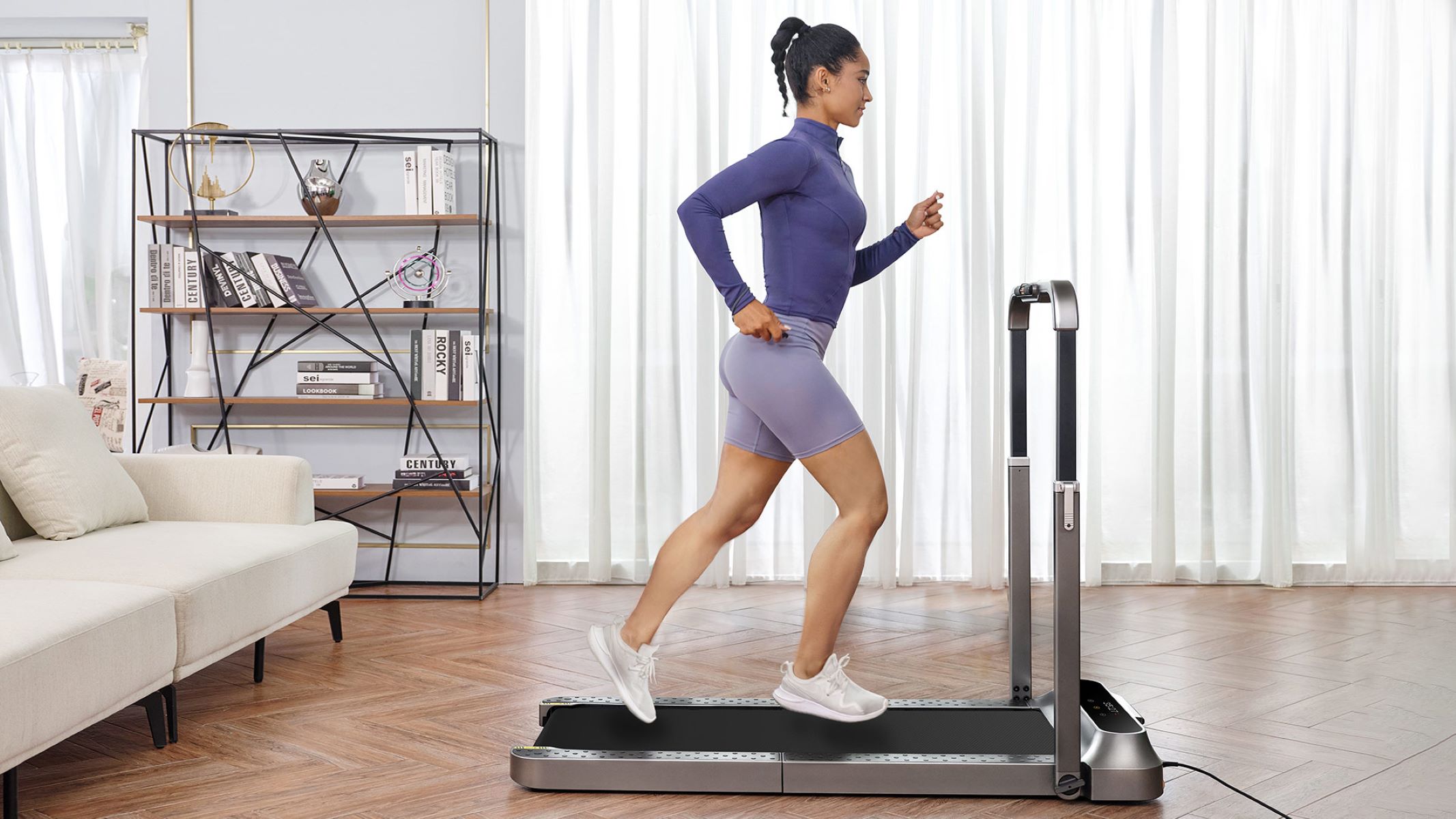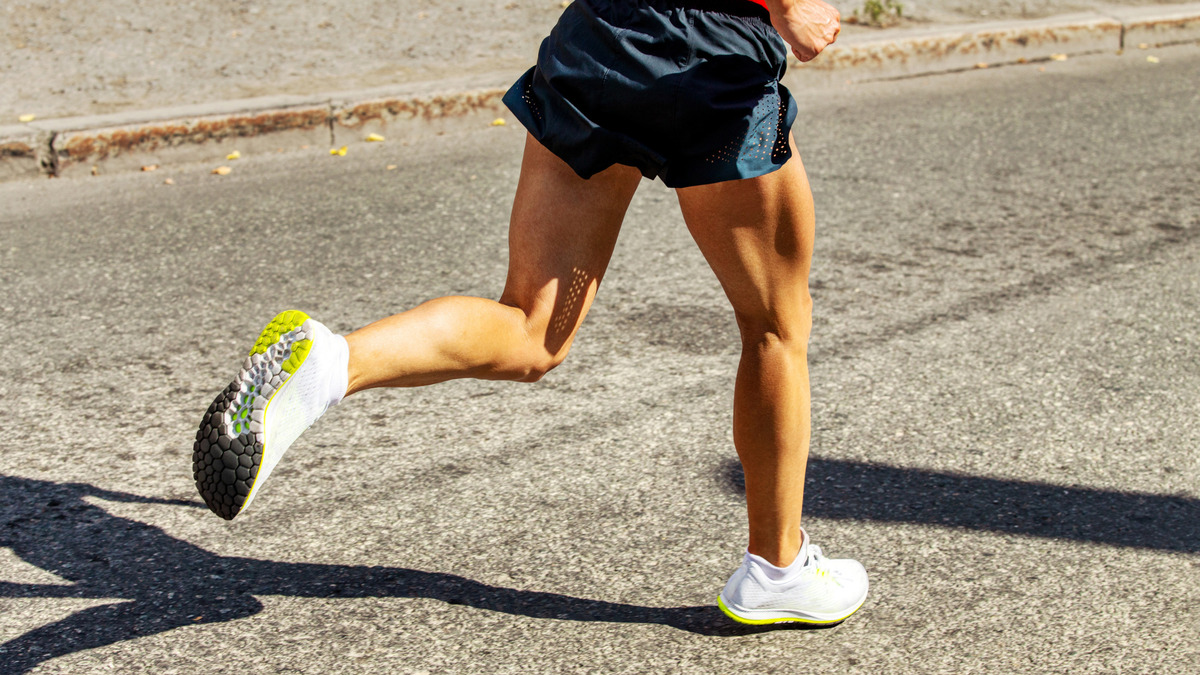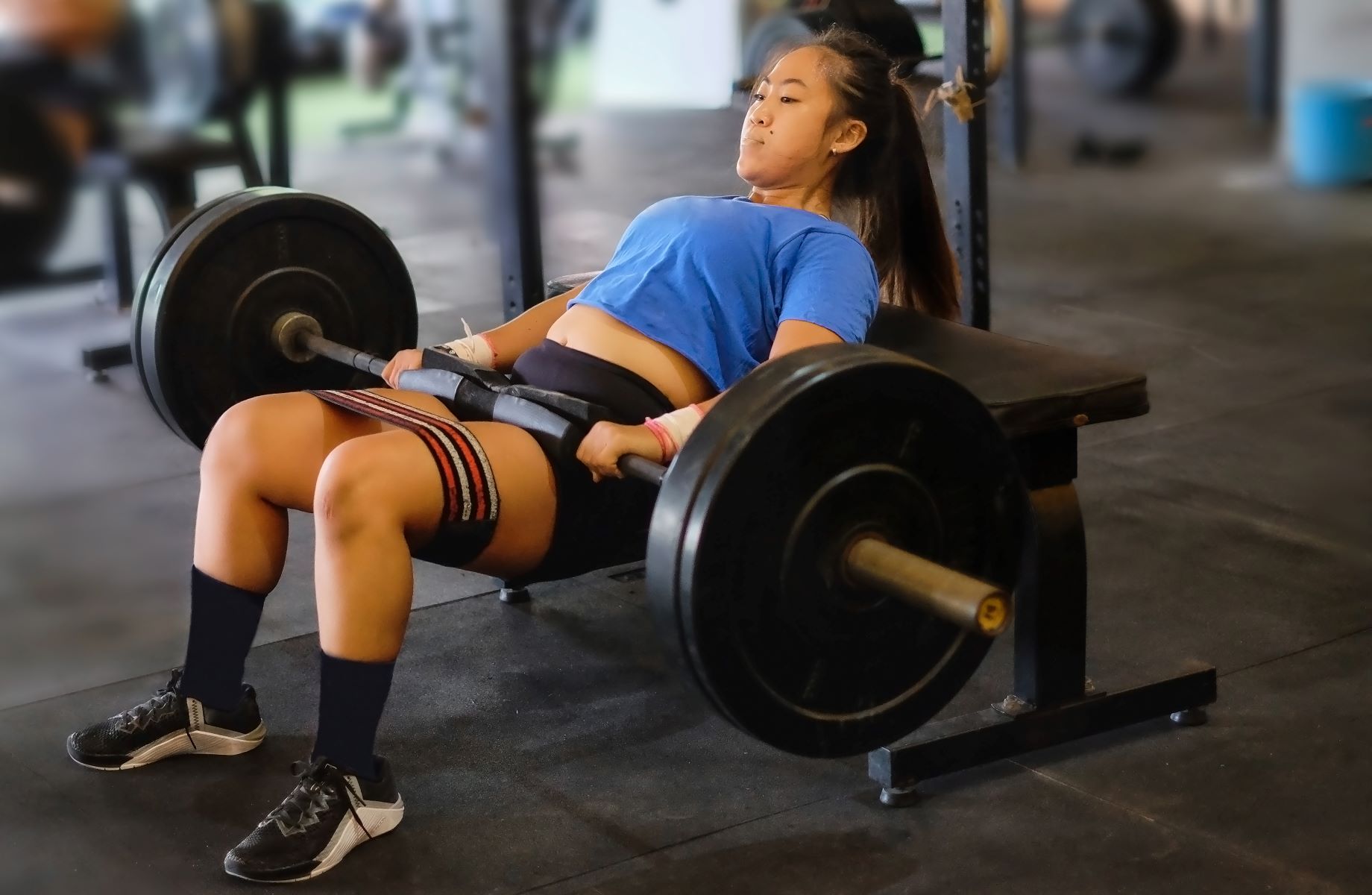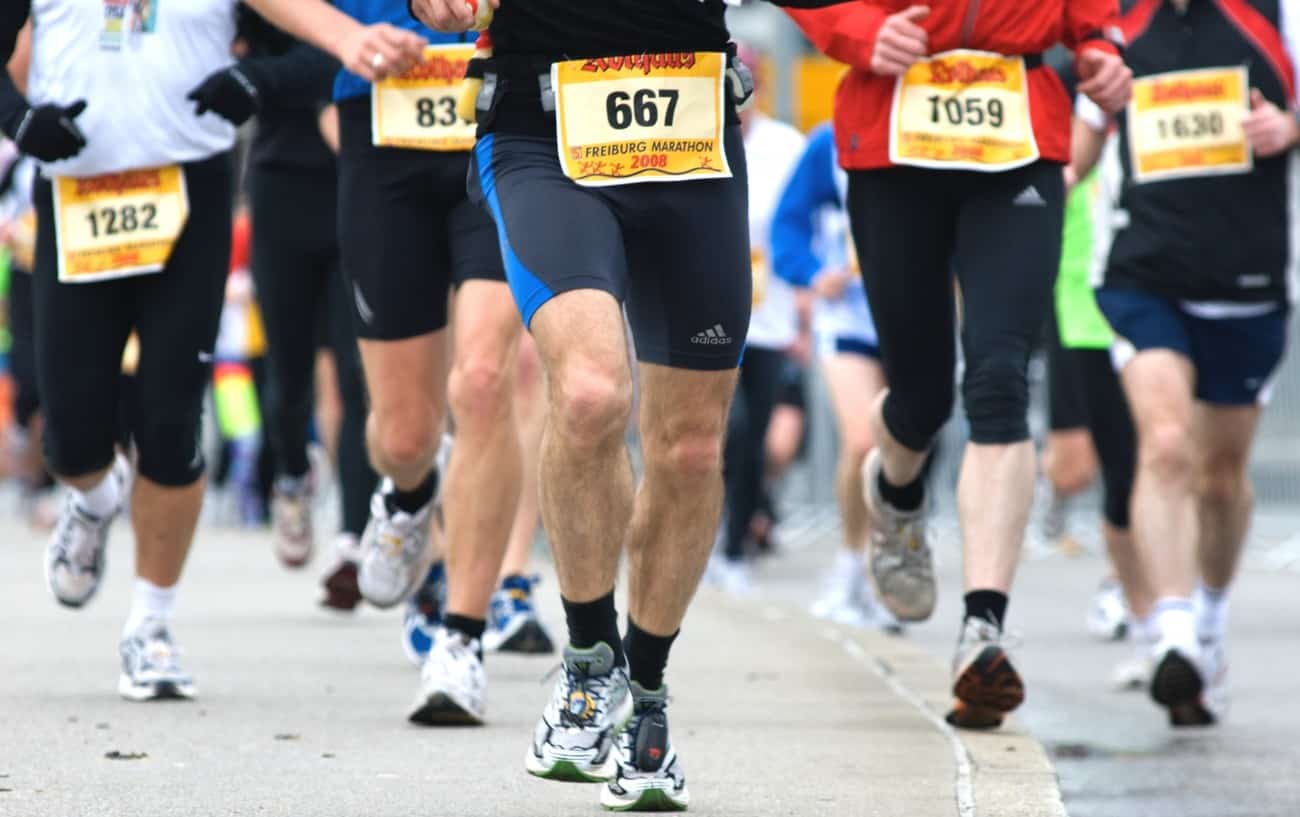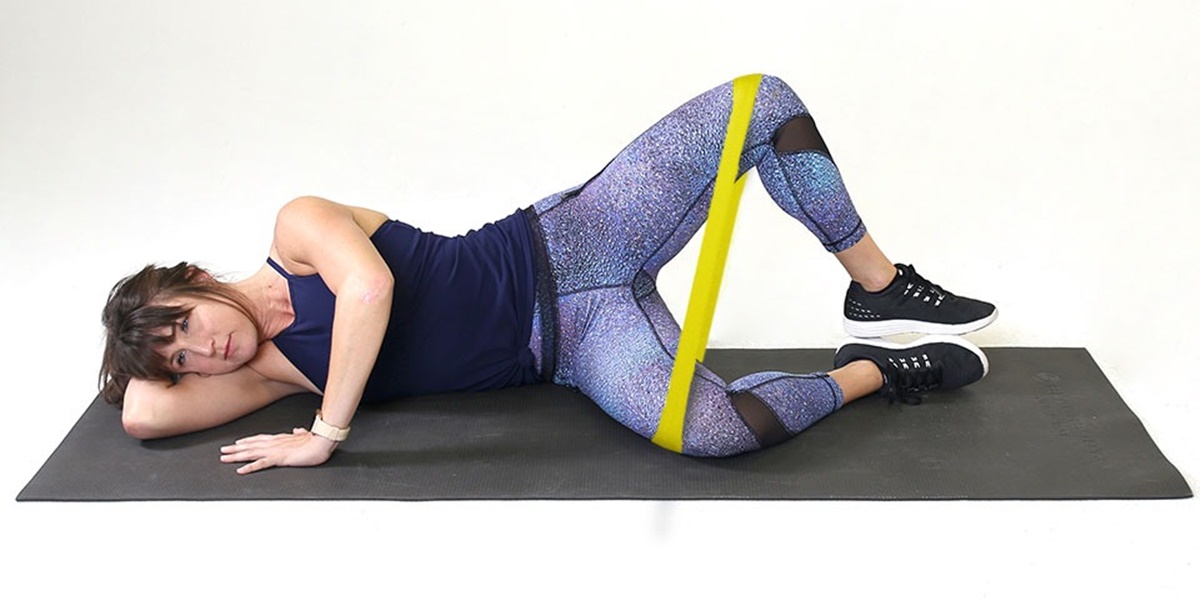

Featured
What Is A Clamshell Exercise
Published: September 30, 2023
Learn all about the clamshell exercise and how it can benefit your fitness routine. Get featured in our comprehensive guide on this popular workout.
Introduction
Welcome to the world of fitness, where exercises come in all shapes and forms. One such exercise that has gained popularity in recent years is the clamshell exercise. If you’re wondering what the clamshell exercise is all about and how it can benefit you, then you’ve come to the right place.
The clamshell exercise is a targeted movement that primarily engages the muscles in your hips, buttocks, and thighs. It is a staple exercise in many fitness routines, especially for those looking to strengthen their lower body and improve their overall stability and mobility.
With its unique name and intriguing movement, the clamshell exercise has captured the curiosity of fitness enthusiasts and beginners alike. In this article, we will explore the ins and outs of the clamshell exercise, including its definition, benefits, variations, common mistakes to avoid, and precautions to take.
So, whether you’re a seasoned athlete looking to add this exercise to your regimen or a beginner eager to learn new exercises, read on to discover the wonders of the clamshell exercise.
Definition of a Clamshell Exercise
The clamshell exercise is a simple yet effective exercise that targets the gluteus medius muscle, which is located on the side of the hip. It gets its name from the motion that mimics the opening and closing of a clamshell.
To perform a clamshell exercise, you start by lying on your side with your legs bent at a 45-degree angle, stacking one on top of the other. Your hips and knees should be slightly flexed, and your feet should be in line with your spine. With proper form, you engage your core and activate your glute muscles to lift your top knee away from the bottom knee, while keeping your feet together. The range of motion should resemble the opening of a clamshell. After holding for a brief moment, you slowly lower your knee back to the starting position.
The main objective of the clamshell exercise is to strengthen the gluteus medius, a muscle crucial for stability and hip mobility. By targeting this muscle, the exercise helps to improve hip abduction, stabilize the pelvis, and enhance overall lower body performance.
The clamshell exercise can be modified and adapted to suit different fitness levels and needs. It can be performed with or without resistance bands or ankle weights to increase the intensity. Additionally, variations of the clamshell exercise exist to target other muscles of the lower body, such as the gluteus maximus and the hip rotators.
Overall, the clamshell exercise is a versatile and effective movement that can be incorporated into any fitness routine. It is particularly beneficial for individuals looking to strengthen their glute muscles, improve hip stability, alleviate lower back pain, and enhance overall lower body strength and functionality.
Benefits of Clamshell Exercise
The clamshell exercise offers a range of benefits for individuals of all fitness levels. Incorporating this exercise into your routine can help improve overall lower body strength, stability, and mobility. Here are some key benefits:
1. Strengthens the gluteus medius: The primary muscle targeted in the clamshell exercise is the gluteus medius. Strengthening this muscle can improve hip stability, which is essential for activities like walking, running, and squatting.
2. Enhances hip mobility: The clamshell exercise involves performing controlled movements with your legs, which helps to increase hip abduction range of motion. This can contribute to better overall hip mobility and prevent stiffness or tightness in the hips.
3. Improves hip stability: The gluteus medius muscle plays a vital role in stabilizing the pelvis. By strengthening this muscle through the clamshell exercise, you can improve hip stability, reduce the risk of injuries, and enhance overall balance and coordination.
4. Alleviates lower back pain: Weak glute muscles can contribute to lower back pain and poor posture. By engaging and strengthening the gluteus medius with the clamshell exercise, you can help alleviate lower back pain and improve spinal alignment.
5. Engages the core: The clamshell exercise requires core engagement to maintain proper form and stability. This helps to strengthen the abdominal muscles and improve overall core strength.
6. Versatile and accessible: The clamshell exercise can be modified to suit various fitness levels and needs. Whether you’re a beginner or advanced, you can start with the basic movement and gradually progress by adding resistance bands or weights to increase the challenge.
7. Can be done anywhere: The beauty of the clamshell exercise is that it can be performed virtually anywhere, making it a convenient addition to your fitness routine. Whether you’re at home, in the gym, or even on vacation, all you need is a comfortable space and a mat to get started.
Incorporating the clamshell exercise into your workout routine can offer numerous benefits for your lower body strength, stability, and mobility. Whether you’re an athlete looking to improve performance or someone seeking to enhance everyday movements, the clamshell exercise is a valuable addition to any fitness regimen.
How to Perform a Clamshell Exercise
The clamshell exercise is a relatively simple movement that can be performed by individuals of all fitness levels. Follow these step-by-step instructions to ensure proper form and execution:
1. Starting position: Begin by lying on your side on a mat or exercise mat. Align your body so that your hips and shoulders are stacked on top of each other. Bend your knees at a 45-degree angle and stack your feet on top of each other.
2. Engage your core: Activate your core muscles by gently drawing your belly button toward your spine. This will help stabilize your body throughout the exercise.
3. Open your top knee: Keeping your feet together, lift your top knee away from the bottom knee, opening your legs like a clamshell. Be sure to initiate the movement from your hip rather than your foot or ankle.
4. Controlled movement: As you open your knee, aim to create a 45-degree angle between your thighs. Avoid letting your pelvis rotate backward or your lower back arch excessively.
5. Hold briefly: Once your top knee is fully opened, hold the position for 1-2 seconds, focusing on squeezing the glute muscles. This helps maximize muscle activation and engagement.
6. Return to starting position: Slowly lower your top knee back down to meet the bottom knee, closing the clamshell. Maintain control throughout the movement and avoid slamming your knees together.
7. Switch sides: After completing the desired number of repetitions on one side, switch to the other side and repeat the exercise. It’s important to balance the work evenly between both sides of the body.
When performing the clamshell exercise, it’s crucial to prioritize proper form over the number of repetitions. Start with a manageable number of repetitions, typically around 10-15 per side, and gradually increase as your strength and technique improve.
To make the exercise more challenging, you can add resistance by placing a resistance band just above your knees or using ankle weights. This added resistance increases the workload on the glute muscles, providing a greater challenge and further enhancing your strength and stability.
Remember to breathe naturally throughout the exercise and listen to your body. If you experience any pain or discomfort, stop the exercise and consult with a healthcare professional before continuing.
Now that you know how to perform the clamshell exercise correctly, let’s explore some variations that you can incorporate to target different muscle groups.
Variations of the Clamshell Exercise
While the traditional clamshell exercise primarily targets the gluteus medius, there are several variations that you can incorporate into your routine to target different muscle groups and add variety. Here are some popular variations:
1. Resistance band clamshell: To add resistance and increase the difficulty of the exercise, place a resistance band just above your knees. The band provides constant tension, challenging your glute muscles throughout the movement.
2. Clamshell with leg lift: After performing a regular clamshell, extend your top leg straight out while keeping your feet together. Lift your leg a few inches off the ground and hold for a few seconds before returning to the starting position. This variation adds an extra challenge to the glute muscles and engages the hip flexors.
3. Clamshell with a hip bridge: Begin in the traditional clamshell position, but instead of lying on your side, lie on your back with your knees bent. Open and close your legs, mimicking the clamshell motion, while simultaneously lifting your hips off the ground into a bridge position. This variation engages the glutes and hamstrings to a greater extent.
4. Standing clamshell: Stand with your feet hip-width apart and place a resistance band just above your knees. Soften your knees, and while keeping your feet parallel, open your knees outward against the resistance of the band. Return to the starting position and repeat. This variation targets the gluteus medius while also engaging the core and leg muscles.
5. Clamshell on a stability ball: Lie on your side with your legs extended and place a stability ball between your feet. Lift your top leg, squeezing the ball between your ankles, and hold for a moment before lowering it back down. This variation adds instability, requiring more muscle engagement for balance and control.
Remember to maintain proper form and control throughout each variation. Focus on quality repetitions rather than speed or quantity. If you’re new to these variations, start with lighter resistance or fewer repetitions, gradually increasing the challenge as you become more comfortable and stronger.
Incorporating these variations into your workout routine can help target different muscle groups and provide a well-rounded lower body workout. Feel free to experiment and find the variations that work best for you and your fitness goals.
Common Mistakes to Avoid During a Clamshell Exercise
While the clamshell exercise may seem straightforward, there are some common mistakes that people often make. By being aware of these mistakes and taking steps to avoid them, you can ensure that you are getting the most out of this exercise and minimizing the risk of injury. Here are some common mistakes to watch out for:
1. Using momentum: One common mistake is using momentum to perform the exercise rather than relying on the targeted muscles. It’s important to focus on controlled movements and engage the glute muscles to actively lift the leg, rather than relying on momentum or swinging the leg.
2. Not maintaining proper alignment: Your body alignment plays a crucial role in the effectiveness and safety of the clamshell exercise. Avoid rolling your hips backward or forward during the movement, as this can shift the emphasis away from the glute muscles. Keep your hips stacked and maintain proper spinal alignment throughout the exercise.
3. Allowing the feet to separate: During the clamshell exercise, it’s important to keep your feet together throughout the movement. Allowing the feet to separate can reduce the effectiveness of the exercise and shift the focus away from the glute muscles. Focus on maintaining alignment and keeping the feet in contact with each other.
4. Overarching or rounding the lower back: Another common mistake is arching or rounding the lower back during the exercise. This can put strain on the lower back and shift the focus away from the glutes. To maintain proper form, engage your core muscles to stabilize the spine and avoid excessive arching or rounding.
5. Not engaging the core: Neglecting to engage the core muscles can result in instability and reduce the effectiveness of the exercise. Remember to activate your core by drawing your belly button towards your spine, which will help stabilize your body and maintain proper alignment throughout the movement.
6. Rushing through the exercise: Performing the clamshell exercise too quickly can compromise form and reduce the effectiveness of the exercise. Focus on slow and controlled movements, fully engaging the glute muscles during the lifting and lowering phases of the exercise.
7. Not gradually progressing: As with any exercise, progression is key to continued improvement. Once you feel comfortable with the basic clamshell exercise, gradually increase the difficulty by adding resistance bands, ankle weights, or trying different variations. This will challenge your muscles and help avoid plateauing.
By being aware of these common mistakes and actively working to correct them, you can ensure that you are maximizing the benefits of the clamshell exercise while minimizing the risk of injury. Focus on maintaining proper form, engaging the targeted muscles, and gradually progressing your workouts to continue challenging your body.
Precautions and Considerations for Clamshell Exercise
While the clamshell exercise is generally safe for most individuals, there are certain precautions and considerations to keep in mind to ensure a safe and effective workout. Here are some important points to consider:
1. Proper form and alignment: It is crucial to maintain proper form and alignment throughout the exercise. Improper form can put unnecessary strain on the joints and lead to discomfort or injury. Focus on keeping your body aligned, engaging the correct muscles, and avoiding excessive movements or compensations.
2. Start with a proper warm-up: Before performing the clamshell exercise, warm up your body with some light cardio exercises and dynamic stretches. This helps increase blood flow to the muscles, prepares them for exercise, and reduces the risk of injury.
3. Gradual progression: If you’re new to the clamshell exercise or haven’t performed it in a while, start with the basic movement and gradually increase the difficulty. Avoid jumping into advanced variations or using heavy resistance right away. Progress at a pace that allows your body to adapt and avoid overexertion.
4. Listen to your body: Pay attention to how your body feels during the exercise. If you experience sharp or intense pain, discomfort, or dizziness, stop the exercise and consult a healthcare professional. It’s important to respect your body’s limits and modify or stop the exercise if needed.
5. Consider modifications: If you have any pre-existing conditions or injuries, it’s important to modify the clamshell exercise to suit your needs. Consult with a healthcare professional or a qualified fitness instructor for appropriate modifications or alternatives that can accommodate your specific requirements.
6. Breathing and relaxation: Remember to breathe naturally throughout the exercise and avoid holding your breath. Breathing properly helps oxygenate your muscles and enhances your overall performance. Additionally, make a conscious effort to relax your body and avoid tension in muscles that are not actively involved in the exercise.
7. Seek guidance if needed: If you’re unsure about the proper technique or have specific limitations or concerns, it is advisable to seek guidance from a certified fitness professional. They can provide guidance, offer modifications, and ensure that you are performing the exercise correctly and safely.
By following these precautions and considerations, you can enjoy a safe and effective clamshell exercise routine. Keep in mind that everyone’s body is different, so it’s important to adapt the exercise to your own needs and capabilities. Listen to your body, stay consistent, and enjoy the benefits that the clamshell exercise can bring to your lower body strength and stability.
Frequently Asked Questions About Clamshell Exercise
Here are some common questions that people often have regarding the clamshell exercise:
1. Is the clamshell exercise only for women?
Not at all! The clamshell exercise is beneficial for both men and women. It targets the gluteus medius muscle, which is important for hip stability and overall lower body strength. Regardless of gender, incorporating the clamshell exercise into your workout routine can help strengthen and tone your glutes and improve your overall lower body functionality.
2. How many repetitions and sets should I do?
The number of repetitions and sets will vary depending on your fitness level and goals. As a general guideline, start with 10-15 repetitions per side and 2-3 sets. If you’re new to the exercise, it’s best to focus on maintaining proper form and gradually increase the number of repetitions or sets over time.
3. Can I do the clamshell exercise if I have knee pain?
If you have knee pain, it’s important to consult with a healthcare professional before attempting the clamshell exercise. They can evaluate your condition and provide appropriate advice or modifications to suit your needs. In some cases, performing alternative exercises or using specific equipment, such as a resistance band placed above the knees, may help reduce stress on the knees during the clamshell exercise.
4. Can I do the clamshell exercise if I have lower back pain?
While the clamshell exercise can help strengthen the glute muscles, it’s important to approach it with caution if you have lower back pain. Focus on maintaining proper spinal alignment throughout the exercise and avoid excessive arching or rounding of the lower back. If you experience any discomfort or exacerbation of your lower back pain, it’s advisable to consult with a healthcare professional or a qualified fitness instructor.
5. Can I do the clamshell exercise if I’m pregnant?
Pregnant women can typically perform the clamshell exercise but may need to modify it as their pregnancy progresses. It’s important to consult with a healthcare professional or a prenatal fitness specialist for guidance on adapting the exercise to suit your changing body. Taking into consideration your comfort level, modifying the range of motion, and using supportive props, such as pillows or cushions, can help ensure the exercise is safe and appropriate for pregnancy.
6. Can I incorporate the clamshell into my post-rehabilitation routine?
If you’re recovering from an injury or have recently completed rehabilitation, it’s essential to consult with your healthcare provider or physical therapist before incorporating the clamshell exercise into your routine. They will be able to evaluate your condition, advise on any modifications or precautions, and ensure that you can safely include the exercise as part of your post-rehabilitation program.
Remember, these are general answers, and it’s always best to consult with a healthcare professional or a qualified fitness instructor for personalized advice based on your individual circumstances and goals.
Conclusion
The clamshell exercise is a versatile and effective movement that targets the gluteus medius muscle, improving hip stability, strength, and mobility. Incorporating this exercise into your fitness routine can provide numerous benefits, such as enhancing lower body strength, alleviating lower back pain, and improving overall stability and balance.
By performing the clamshell exercise with proper form and technique, you can maximize its benefits and minimize the risk of injury. Remember to focus on controlled movements, engage the glute muscles, and maintain proper alignment throughout the exercise. Gradually progressing and incorporating variations can help prevent plateaus and ensure continued improvement over time.
As with any exercise, it’s essential to listen to your body, respect your limitations, and seek guidance if needed. If you have any pre-existing conditions, injuries, or concerns, consult with a healthcare professional or a qualified fitness instructor for appropriate modifications and recommendations.
Whether you’re a beginner or an experienced fitness enthusiast, the clamshell exercise offers an effective way to strengthen your lower body and improve your overall fitness. So, grab a mat, get into position, and start incorporating the clamshell exercise into your fitness routine today!
